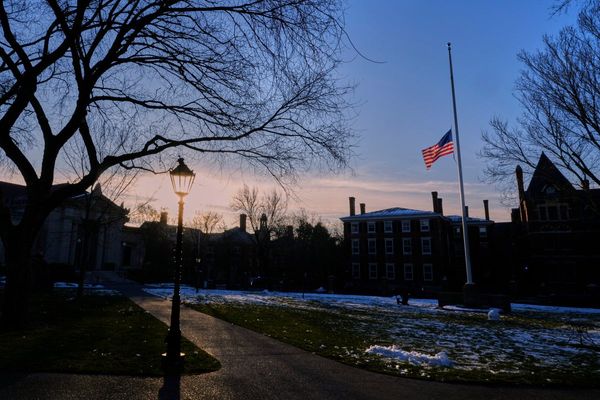
The American environmentalist writer and teacher Joanna Macy, who has died aged 96, pioneered workshops that helped people deal with anxiety over the future of the planet, and develop a fresh way of experiencing the world.
Her teaching and 12 books drew on Buddhism, systems thinking – which looks at the world as an interconnected whole rather than separate parts – and deep ecology – the understanding that humans are simply one part of our living planet.
Macy’s most distinctive gift, however, was her ability to translate a theoretical understanding of the world and its challenges into what the Buddhist teacher David Loy called an “embodied understanding” – something people could feel and experience directly.
She first developed “despair and empowerment” workshops during the 1970s, as a response to collective anxiety over the cold war and nuclear arms race, which led many to feel the world was on the brink of destruction.
As these anxieties shifted to the climate crisis in recent decades, her work offered a way to transform people’s despair into positive action, exerting a profound influence on the peace and environmental movements.
Her best known programme, The Work That Reconnects, takes participants through a “spiral” process comprising four stages. The first stage is “gratitude”, appreciating that the world is a gift. The next stage involves recognising the pain we feel in response to the state of the world and allowing it to surface as despair. “The refusal to feel takes a heavy toll,” Macy wrote in her 1991 essay collection World As Lover, World As Self. “The energy expended in pushing down despair is diverted from more creative uses, depleting the resilience and imagination needed for fresh visions and strategies.”
Key to the process is recognising that despair can forge a compassionate connection with others, and in the third stage, “seeing with new eyes”, participants are encouraged to explore a radical different experience of the world. The final stage is “going forth” to make a difference, or commitment to participating in what Macy called The Great Turning, that is, the transition to a “life-sustaining society”.
Macy believed that the roots of the environmental crisis were spiritual and psychological, growing from a faulty view of the world that is embedded in what she called the “industrial growth society”. An alternative, life-sustaining society could only grow from an intensely imagined alternative understanding of life as an interconnected web.
Born Mary Joanne Rogers in Los Angeles, she grew up in New York, the youngest of three children born to Margaret (nee Kinsey), a church administrator, and Hartley, a stockbroker.
After graduating from Wellesley College in biblical history in 1950, she briefly worked for the CIA in West Germany, leaving in 1953 to marry Fran Macy, a Peace Corps officer and later a prominent anti-nuclear campaigner.
She travelled with him to Nigeria, Tunisia, and India, where her encounters with Tibetan refugees sparked a lifelong engagement with Buddhism. In her 2000 memoir, Widening Circles, Macy wrote of this first encounter with Buddhists in the 60s: “The company of these Tibetans filled me with a kind of wild gladness. I felt increasingly drawn to the religion – or whatever it was – that had shaped their minds.”
The family returned to the US in 1969, where Macy continued to study Buddhism, mainly with Theravada Buddhist teachers. In 1978 she gained a PhD from Syracuse University with a thesis in “mutual causality in Buddhism and general systems theory”.
She argued that both disciplines implied seeing the world as an interconnected system of which we ourselves are a part. The motivation behind her PhD, she later commented, was “religious and philosophical concerns made urgent by the world situation”.
Fran’s involvement in the nuclear disarmament campaign had drawn Joanna into the movement. The mixture of despair and compassion she felt led her to reflect on how the two emotions were connected and, in collaboration with the psychologist Chellis Glendinning and the activist Fran Peavey, Macy developed her first workshops.
While many others in the environmental movement focused on political and scientific issues, Macy and other proponents of deep ecology promoted the spiritual transformation they believed must accompany social change.
Participants in The Work That Reconnects, for instance, might be invited to identify with their ancestors in the distant past, a descendant seven generations in the future, or with a being of another species.
She introduced a strong environmental emphasis to the global Engaged Buddhism movement, and the Buddhist-based Naropa University in Colorado recently established the Joanna Macy Center for Resilience and Regeneration to continue her work. A committed teacher, Macy continued to offer workshops online well into her 90s.
Fran died in 2009. She is survived by her three children, Christopher, Jack and Peggy, and three grandchildren, Julien, Eliza and Lydia.
• Joanna (Mary Joanne) Macy, writer, teacher and environmental activist, born 2 May 1929; died 19 July 2025







